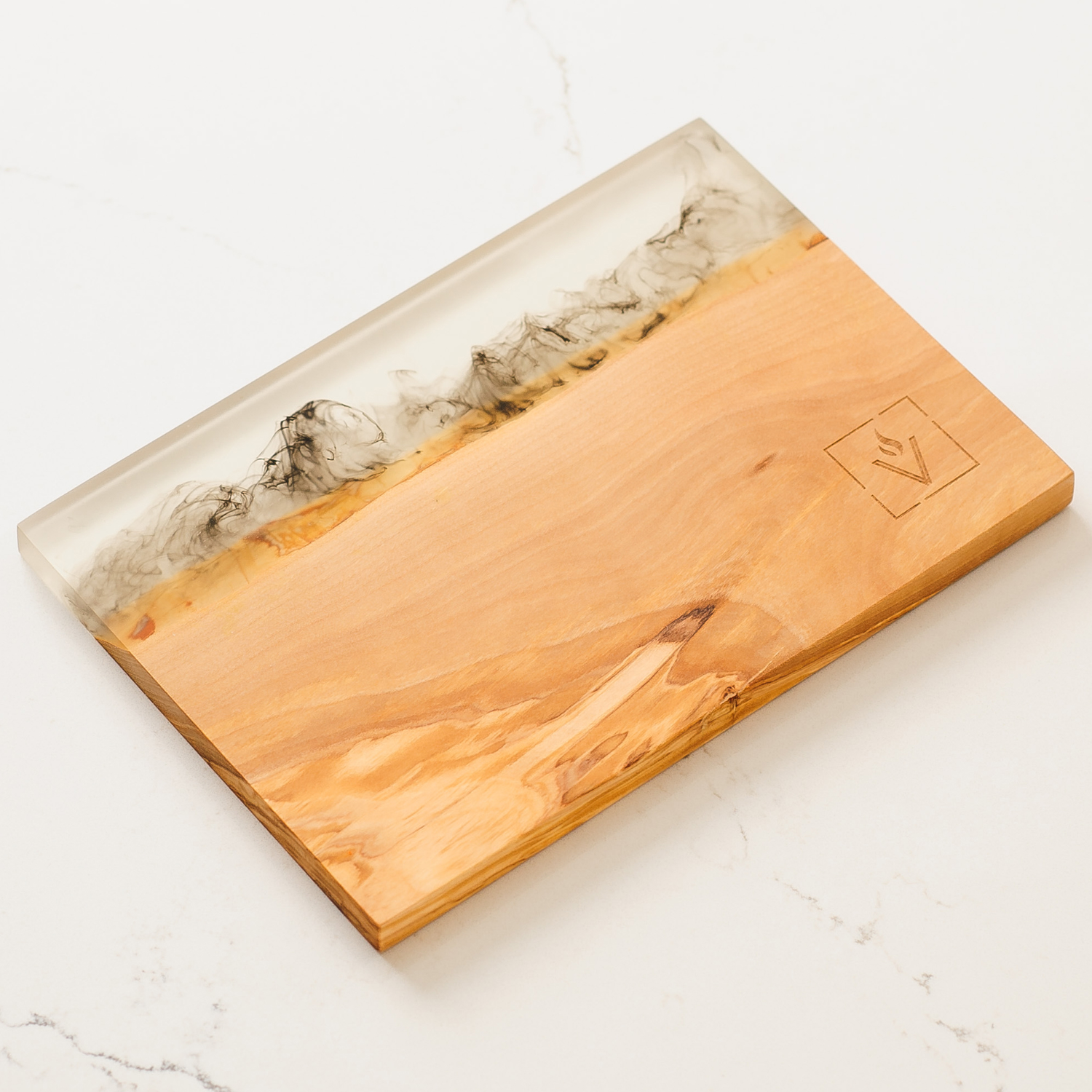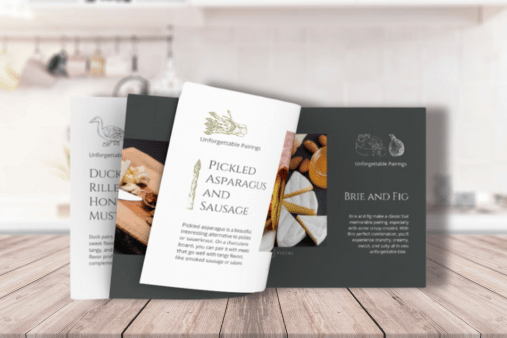Based on the majority's opinion, it’s these flavor combinations and convenience of charcuterie boards that make them so popular.
However, there is also a visual element to consider. How can the mere photo of a well-designed charcuterie board stir an appetite? Let's review the 7 most important elements of food presentation.
Learn how to take your appetizer game to the next level with our free guide book.
We'll send it to your inbox instantly.

1. Color
Colors that are nearly the same are dull and boring, so we want to avoid a monochromatic look. Think contrast, pops of color. This is one of the reasons we like to add fruit to our boards - fruit can be so colorful! And, if you don’t have anything else, you can always head outside to snip a small sprig of a plant to add as a garnish.
2. Texture
Creating a texture contrast is a good way to draw the eye. What can be seen, can be felt with the tongue. A variety of textures adds interest; i.e. smooth, rough, lumpy, soft, crisp. Too many soft or crunchy foods on a board is unappealing, but a combination of both is delicious. Aim for at at least three different textures.
3. Size and Shape
Use various sizes and shapes. Don’t be afraid to be creative - maybe cut your items into interesting shapes or use some fun molds to shape your cheeses! Also, take into consideration how to get the best impact - appearance and symmetry are all affected by whether the food is sliced thinly, thickly, or left whole. You'll soon get the idea of what works, and there's never any harm borrowing ideas from your favorite restaurants.
4. Flavor
Each person has 9,000 tastebuds that can detect sweet, bitter, sour, and salt. Smell is also important (You know how food doesn’t taste as great when your nose is congested?) In addition, flavor is where you can appeal to a variety of preferences - some like blue cheeses, some like sharp, some like earthy, etc.
5. Temperature
Take the season and forecast into consideration when building your cheese board. During the summer, something lighter and refreshing might be nice on the board, while during the winter you may choose a dish more savory.
6. Weight
Rich, very sweet, or fatty foods need to be balanced with lighter foods. Dense cheeses need a more airy companion to keep from feeling off-balance in the mouth. The same goes for the very light and fluffy. Don’t forget to take into consideration your carrier - a heavy bread will feel different from a light wafer.
7. Rule of Odds
Having an odd number of elements on a board is more visually appealing than having an even number. It creates the impression that a piece of food is being framed by the others. Keep this in mind, whether you're serving different types of foods or more than one piece of the same food.


